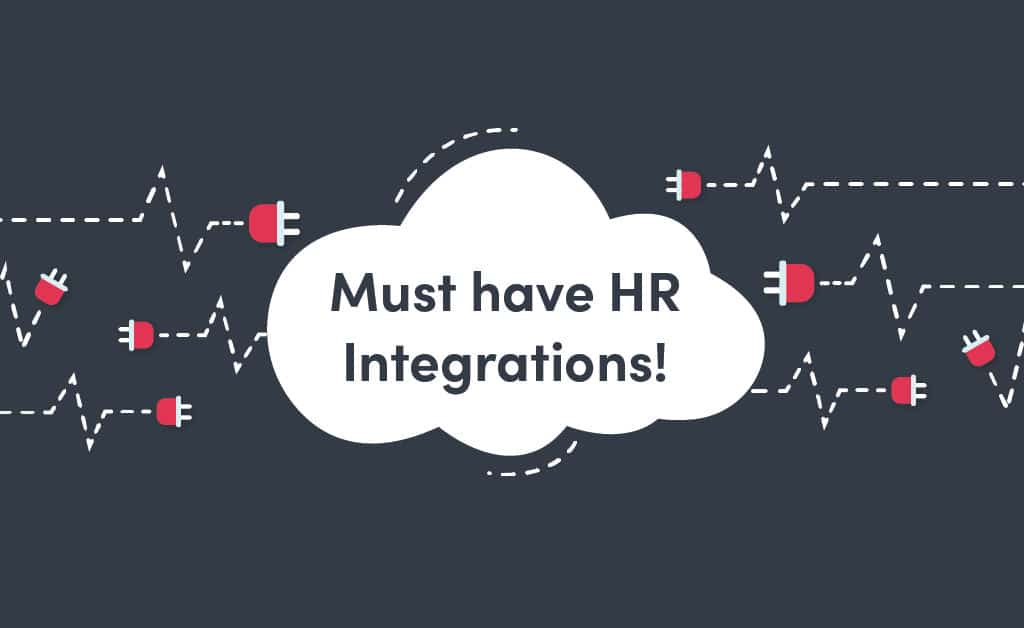In this comprehensive resource, we’ll walk you through everything you need to know about applicant tracking systems and how they can streamline your hiring process. We’ll cover the basics, including what an ATS is, how it works, and its key benefits.
But that’s not all – we’ll also delve into advanced strategies and best practices to help you make the most of your ATS. From optimizing job postings for maximum exposure to efficiently managing candidate data, this guide will equip you with the knowledge and tools to attract top talent and make better hiring decisions.
With the help of an ATS, you can reduce the time and effort spent on administrative tasks, improve candidate experience, and ultimately find the best fit for your organization. So, let’s dive in and revolutionize your hiring process together.
What is an Applicant Tracking System (ATS)
An Applicant Tracking System (ATS) is a software application that helps organizations automate and streamline their recruitment process. It allows recruiters and hiring managers to manage job postings, track applicants, and organize candidate data in a centralized system. ATSs are designed to simplify the hiring process by eliminating manual tasks and providing a more efficient way to identify, screen, and hire qualified candidates.
One of the key features of an ATS is its ability to parse resumes and extract relevant information, such as contact details, work experience, and education history. This eliminates the need for manual data entry and allows recruiters to quickly assess the qualifications of applicants. Additionally, an ATS can automatically rank and filter candidates based on predefined criteria, making it easier to identify the most suitable candidates for a particular role.
Another important aspect of an ATS is its collaboration and communication capabilities. Recruiters can collaborate with hiring managers, share feedback, and track the progress of candidates within the system. This streamlines the decision-making process and ensures everyone involved in the hiring process is on the same page.
Overall, an ATS serves as a centralized hub for all recruitment activities, providing a seamless and efficient way to manage the hiring process from start to finish.
The Benefits of Using an ATS
Implementing an applicant tracking system can bring numerous benefits to your hiring process. Let’s take a closer look at some of the key advantages:
1. Time and Efficiency: One of the primary benefits of using an ATS is the time and efficiency it brings to the hiring process. By automating manual tasks, such as resume screening and candidate tracking, recruiters can focus their time and energy on more strategic activities, such as interviewing and assessing candidates. This not only speeds up the hiring process but also allows recruiters to handle a larger volume of applicants without sacrificing quality.

2. Improved Candidate Experience: A positive candidate experience is crucial for attracting top talent and building a strong employer brand. An ATS can help enhance the candidate experience by providing a user-friendly application process, timely communication, and personalized interactions. Candidates can easily submit their applications, track their progress, and receive updates on their status, creating a seamless and transparent experience.
3. Centralized Data Management: With an ATS, all candidate data is stored in a centralized database, making it easy to access and manage. Recruiters can search and filter candidates based on various criteria, such as skills, experience, and location. This allows for a more targeted and efficient candidate sourcing process. Additionally, having all candidate information in one place enables recruiters to easily track the progress of applicants, ensuring no candidate falls through the cracks.
4. Compliance and Reporting: An ATS can help ensure compliance with hiring laws and regulations by providing standardized templates and workflows. This reduces the risk of non-compliance and helps maintain a fair and unbiased hiring process. Furthermore, an ATS can generate reports and analytics on various recruitment metrics, such as time-to-fill, cost-per-hire, and source of hire. These insights enable organizations to make data-driven decisions and continuously improve their hiring strategies.
5. Integration with Other HR Tools: Many ATSs offer integration capabilities with other HR tools, such as payroll systems, background check providers, and onboarding software. This seamless integration streamlines the entire employee lifecycle, from recruitment to onboarding, and eliminates the need for manual data transfer between systems. This not only saves time but also ensures a smooth transition for new hires.
By leveraging these benefits, organizations can significantly streamline their hiring process and gain a competitive edge in the talent market.
The Evolution of ATS

Improving Hiring Efficiency – Staffing Software
Applicant tracking systems have come a long way since their inception. Initially, ATSs were simple databases used to store and track candidate information. However, as technology advanced and the demand for more sophisticated recruitment tools grew, ATSs evolved to become comprehensive platforms that automate and streamline the entire hiring process.
In the early days, ATSs were primarily used by large enterprises with high-volume hiring needs. These systems were often complex and expensive, making them inaccessible to small and medium-sized businesses. However, with the advent of cloud-based ATS solutions, the landscape has changed. Modern ATSs are now affordable, scalable, and user-friendly, making them accessible to organizations of all sizes.
Cloud-based ATSs also offer the advantage of easy implementation and updates. Unlike traditional ATSs that required on-premise installation and regular maintenance, cloud-based ATSs can be accessed through a web browser, eliminating the need for complex IT infrastructure. Updates and new features are automatically rolled out by the vendor, ensuring organizations always have access to the latest advancements in recruitment technology.
Another significant trend in the evolution of ATSs is the rise of artificial intelligence (AI) and machine learning (ML) capabilities. AI-powered ATSs can automate repetitive tasks, such as resume screening, by analyzing patterns and making predictions based on historical data. This not only saves time but also improves the accuracy and objectivity of candidate selection.
As technology continues to advance, we can expect ATSs to become even more intelligent and intuitive, further revolutionizing the hiring process.
How Does an ATS Work
An ATS consists of various modules and functionalities that work together to automate and streamline the recruitment process. Let’s explore the key components of an ATS and how they work:
1. Job Posting and Distribution: The first step in the hiring process is creating and posting job openings. With an ATS, recruiters can create job descriptions, specify job requirements, and customize application forms. Once the job posting is finalized, the ATS distributes it to various job boards, social media platforms, and career sites to maximize exposure and attract a diverse pool of candidates.
2. Resume Parsing and Screening: When candidates apply for a job, their resumes are automatically parsed and stored in the ATS database. The parsing technology extracts relevant information, such as contact details, work experience, and education history, and saves it in a structured format. Recruiters can then screen resumes based on predefined criteria, such as skills, qualifications, and experience, using advanced search and filtering capabilities.
3. Candidate Relationship Management: An ATS acts as a central hub for managing candidate interactions and communications. Recruiters can track the progress of candidates, schedule interviews, and send automated email notifications. Some ATSs also offer features like email templates, interview scorecards, and interview scheduling tools to streamline the candidate management process and ensure a seamless experience for both recruiters and candidates.
4. Collaborative Hiring: Collaboration is crucial in the hiring process, especially when multiple stakeholders are involved. An ATS facilitates collaboration by providing a platform for recruiters, hiring managers, and other team members to share feedback, evaluate candidates, and make informed decisions. This eliminates the need for back-and-forth emails and spreadsheets, improving communication and streamlining the decision-making process.
5. Reporting and Analytics: An ATS generates reports and analytics on various recruitment metrics, providing valuable insights into the effectiveness of the hiring process. Recruiters can track metrics such as time-to-fill, cost-per-hire, source of hire, and candidate conversion rates. These insights enable organizations to identify bottlenecks, optimize their recruitment strategies, and make data-driven decisions to improve overall hiring efficiency.

By integrating these components, an ATS provides a comprehensive solution for managing the entire recruitment process, from job posting to candidate selection.
Choosing the Right ATS for Your Business
Selecting the right applicant tracking system for your business can be a challenging task. With numerous options available in the market, it’s important to consider your specific needs and requirements before making a decision. Here are some factors to consider when choosing an ATS:
1. Scalability: As your business grows, so will your hiring needs. It’s essential to choose an ATS that can scale with your organization and accommodate increasing volumes of candidates. Consider the number of users, job postings, and candidate data the system can handle without compromising performance.
2. User-Friendliness: An ATS should be intuitive and easy to use for both recruiters and candidates. Look for a system that offers a clean and user-friendly interface, customizable workflows, and a seamless application process. A complex and cumbersome ATS can hinder adoption and lead to frustration among users.
3. Integration Capabilities: Consider the other HR tools and systems you currently use or plan to implement in the future. Ensure that the ATS can integrate with these tools, such as payroll systems, background check providers, and onboarding software. Seamless integration eliminates manual data transfer and improves overall efficiency.
4. Customization Options: Every organization has unique recruitment processes and requirements. Look for an ATS that offers customization options, such as customizable workflows, application forms, and screening criteria. This allows you to tailor the system to your specific needs and align it with your existing processes.
5. Vendor Support and Reputation: A reliable vendor with excellent customer support is crucial for a successful implementation and smooth ongoing operation of an ATS. Research the vendor’s reputation, read customer reviews, and inquire about their support services. A responsive and knowledgeable support team can help resolve issues quickly and ensure a positive user experience.
6. Cost and Return on Investment: Consider your budget and the potential return on investment (ROI) when evaluating ATS options. While cost is an important factor, it’s equally important to consider the value the system brings to your recruitment process. Calculate the potential time and cost savings an ATS can offer and compare it with the system’s price.

By carefully evaluating these factors and conducting thorough research, you can choose an ATS that aligns with your business goals and enhances your hiring process.
Implementing an ATS in Your Hiring Process
Once you’ve selected the right ATS for your business, implementing it effectively is essential to maximize its benefits. Here are some steps to consider when implementing an ATS:
1. Define Your Goals: Clearly define your recruitment goals and objectives before implementing an ATS. Identify the pain points in your current hiring process and determine how an ATS can address them. This will help you set realistic expectations and measure the success of the implementation.
2. Plan and Prepare: Create a detailed implementation plan that outlines the steps, timeline, and responsibilities. Identify the data you need to migrate to the new system and ensure its quality and accuracy. Prepare your team by providing training and resources to familiarize them with the new system and its functionalities.
3. Customize and Configure: Take advantage of the customization options provided by the ATS to align it with your existing processes and workflows. Customize application forms, screening criteria, and email templates to reflect your employer brand and recruitment requirements. Configure the system to automate repetitive tasks and streamline your unique hiring process.
4. Test and Validate: Before fully deploying the ATS, thoroughly test its functionalities and ensure it meets your requirements. Test the application process from the candidate’s perspective to ensure a seamless user experience. Validate the parsing and screening capabilities by uploading sample resumes and verifying the accuracy of the extracted data.
5. Train and Support: Provide comprehensive training to your team to ensure they are proficient in using the new ATS. Offer ongoing support and resources to address any questions or challenges that may arise during the transition. Encourage feedback from users and continuously evaluate the system’s performance to identify areas for improvement.
By following these steps and involving key stakeholders throughout the implementation process, you can successfully integrate an ATS into your hiring process and start reaping its benefits.
Best Practices for Optimizing Your ATS
To make the most of your ATS and maximize its effectiveness, consider implementing the following best practices:
1. Optimize Job Postings: Craft compelling and detailed job descriptions that accurately represent the role and your company culture. Use relevant keywords and phrases to improve the visibility of your job postings in search results. Leverage your ATS’s job distribution capabilities to reach a wider audience across multiple platforms.
2. Streamline Application Process: Make the application process as seamless and user-friendly as possible. Avoid lengthy and complex application forms that may discourage candidates from applying. Use a mobile-responsive design to ensure candidates can easily apply from any device. Test the application process regularly to identify and fix any issues that may arise.
3. Define Screening Criteria: Clearly define the screening criteria for each job opening and customize your ATS accordingly. Identify the key skills, qualifications, and experience required for the role and use these criteria to filter and rank candidates. Regularly evaluate and refine the screening criteria based on the success of past hires and the evolving needs of your organization.
4. Leverage Automation: Take full advantage of the automation capabilities offered by your ATS. Automate repetitive tasks, such as resume parsing, email notifications, and interview scheduling, to save time and improve efficiency. However, be mindful of maintaining a personal touch and avoid over-automating interactions with candidates.
5. Maintain Data Accuracy: Regularly review and update candidate data to ensure its accuracy and relevance. Implement data cleansing processes to remove duplicate or obsolete records. Encourage recruiters to provide feedback and update candidate profiles based on their interactions and assessments.
6. Monitor and Analyze Metrics: Continuously monitor and analyze recruitment metrics to measure the effectiveness of your hiring process. Track metrics such as time-to-fill, cost-per-hire, source of hire, and candidate conversion rates. Use these insights to identify bottlenecks, optimize your recruitment strategies, and improve overall efficiency.
By implementing these best practices, you can optimize your ATS usage and achieve better results in your hiring process.
Integrating Your ATS with Other HR Tools

Integrating your ATS with other HR tools can further streamline your recruitment process and enhance the overall employee lifecycle.
Conclusion
In today’s competitive job market, leveraging an Applicant Tracking System (ATS) can be a game-changer for your hiring process. This ultimate guide has provided you with a thorough understanding of what an ATS is, how it functions, and the numerous benefits it brings to your recruitment strategy.
An ATS not only automates and streamlines your hiring tasks but also enhances the candidate experience, ensures centralized data management, and facilitates compliance and reporting. As these systems have evolved, they’ve become more accessible, affordable, and powerful, incorporating advanced technologies like AI and machine learning to further optimize recruitment efforts.
Choosing the right ATS for your business involves considering scalability, user-friendliness, integration capabilities, and cost-effectiveness. Implementing an ATS effectively requires careful planning, customization, and training to ensure a seamless transition and maximum benefit.
By following best practices such as optimizing job postings, leveraging automation, and maintaining accurate data, you can fully capitalize on the capabilities of your ATS. Integrating your ATS with other HR tools can also provide a more cohesive and efficient approach to managing the entire employee lifecycle.
Ultimately, an ATS is a vital tool for any organization looking to improve their recruitment process, attract top talent, and stay competitive in the job market. Embrace the power of applicant tracking systems and revolutionize your hiring process today.

